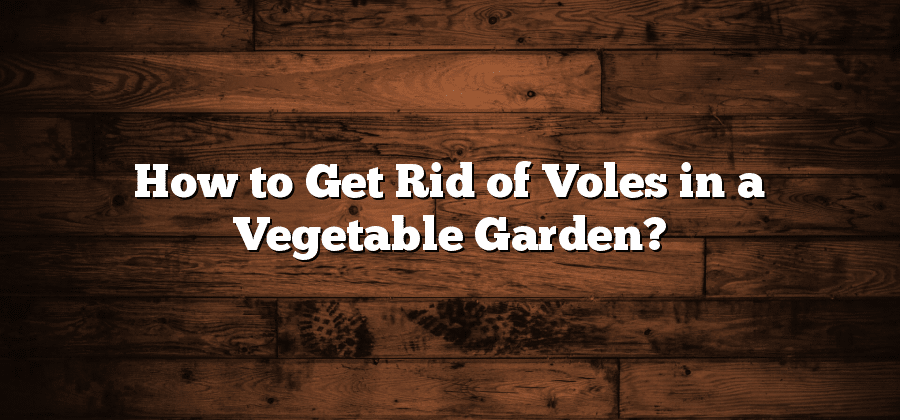Identifying Vole Damage in Your Vegetable Garden
The presence of voles in your vegetable garden can be quite damaging to your plants. These small rodents are known for their voracious appetite and ability to tunnel through soil. One of the most telltale signs of vole damage is the gnawing and chewing on vegetation, particularly at the base of plants. You may notice stems or roots that have been nibbled on or completely severed. In addition, voles are notorious for tunneling just below the surface of the soil, creating runways or pathways in which they travel. These runways can often be seen as narrow, slightly raised ridges in your garden beds. If you suspect vole activity, take a closer look at your plants and the surrounding soil to identify any signs of damage.
Understanding the Habits and Behavior of Voles
Voles, commonly referred to as meadow mice, are small rodents that can cause significant damage to gardens. Understanding their habits and behavior is essential in effectively managing and preventing their presence.
Voles are primarily herbivorous creatures that feed on plants, vegetables, and grasses. They are notorious for tunneling through soil, creating intricate networks of underground runways that allow them to travel undetected. These runways provide shelter and protection from predators, as well as easy access to their food sources. Voles are most active during the early morning and late afternoon, often venturing out of their burrows in search of sustenance. They have a rapid reproductive rate, with females giving birth to several litters each year. This ability to reproduce quickly contributes to their population growth and potential damage to vegetation.
Creating an Uninviting Environment for Voles in Your Garden
When it comes to keeping voles away from your vegetable garden, creating an uninviting environment is key. These small rodents are attracted to areas with plenty of vegetation, making your garden a potential haven for them. However, by implementing a few simple measures, you can discourage voles from taking up residence in your prized vegetable plot.
Maintaining good garden hygiene is crucial in deterring voles. Keep the area clean and free of debris, including fallen leaves and grass clippings. Voles are known to use such materials for nest building, so removing them from your garden can discourage their presence. Additionally, it is important to trim any overgrown vegetation around the garden, as dense foliage can provide hiding places and a safe haven for these rodents. By minimizing their potential hiding spots and removing attractive nesting materials, you can create an environment that is far less appealing to voles.
Implementing Physical Barriers to Keep Voles Out
One effective method for preventing vole damage in your vegetable garden is by implementing physical barriers. These barriers serve as a physical deterrent, preventing voles from gaining access to your precious plants. There are several types of physical barriers that you can consider, each with its own advantages and disadvantages.
One popular option is the use of wire mesh or hardware cloth. This material is durable and can be buried into the ground surrounding your garden. It should be buried at least 12 inches deep to prevent voles from tunneling underneath. Additionally, ensure that the mesh extends above ground by at least 12 inches to prevent voles from climbing over it. This type of barrier requires some initial effort to install, but it provides a long-lasting and effective solution to protect your plants from vole damage.
Utilizing Natural Predators to Control Vole Populations
Natural predators can play a crucial role in controlling vole populations in your garden. These predators include various species of birds, such as owls, hawks, and kestrels, as well as small mammals like foxes and snakes. By attracting and encouraging these natural predators to inhabit your garden, you can effectively limit the number of voles that cause damage to your vegetable crops.
One effective method to attract natural predators is to create a diverse and welcoming habitat. By incorporating native plants, shrubs, and trees into your garden, you can provide shelter and food sources for these predators. Additionally, leaving small patches of wild or unmowed areas can offer hiding places for snakes and other predators. It’s important to note that providing a suitable habitat may take time, so be patient and persistent in your efforts to create an environment that supports natural predators.






